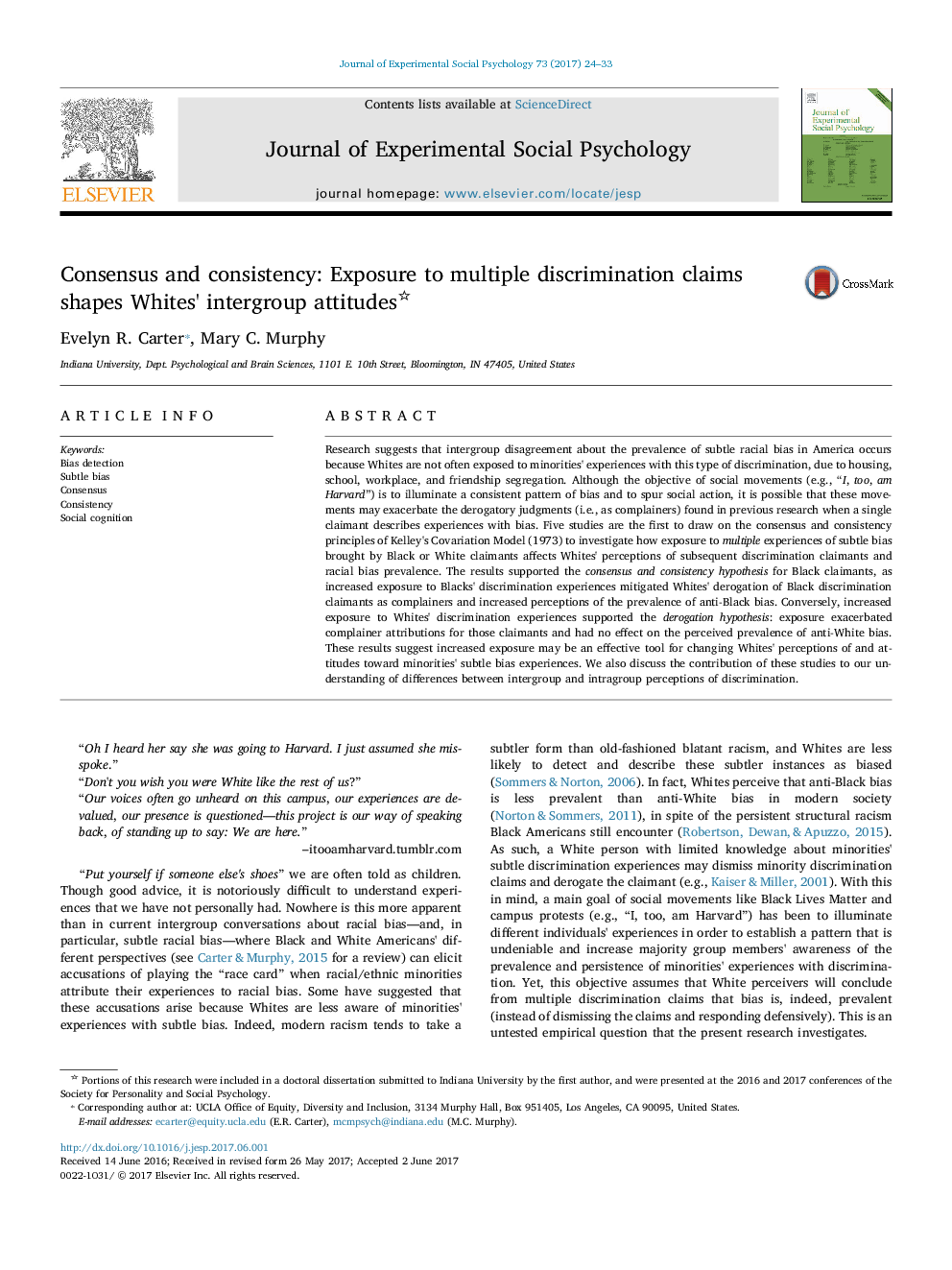ترجمه فارسی عنوان مقاله
انسجام و هماهنگی: در معرض چندین ادعای تبعیض نژادی، نگرش های گروهی سفید پوستان را شکل می دهد
عنوان انگلیسی
Consensus and consistency: Exposure to multiple discrimination claims shapes Whites' intergroup attitudes
| کد مقاله | سال انتشار | تعداد صفحات مقاله انگلیسی |
|---|---|---|
| 130084 | 2017 | 10 صفحه PDF |
منبع

Publisher : Elsevier - Science Direct (الزویر - ساینس دایرکت)
Journal : Journal of Experimental Social Psychology, Volume 73, November 2017, Pages 24-33
ترجمه کلمات کلیدی
تشخیص اختلال، تعصب ظریف اجماع، وفاق، ثبات، شناخت اجتماعی،
کلمات کلیدی انگلیسی
Bias detection; Subtle bias; Consensus; Consistency; Social cognition;

